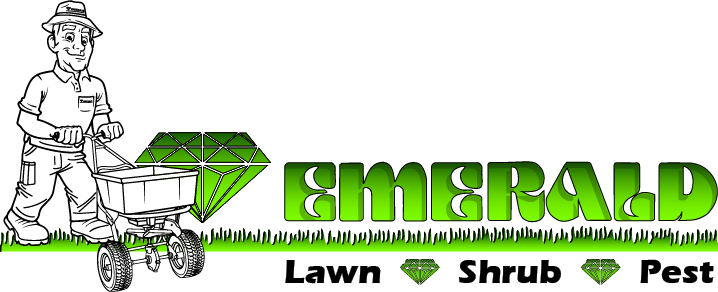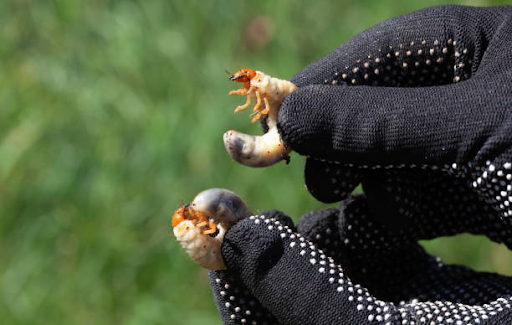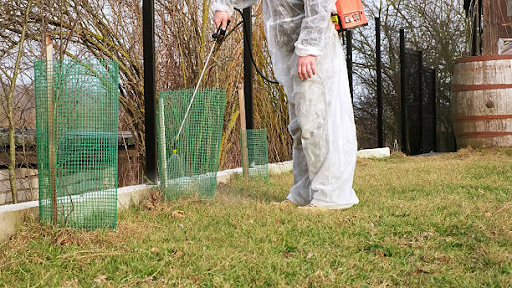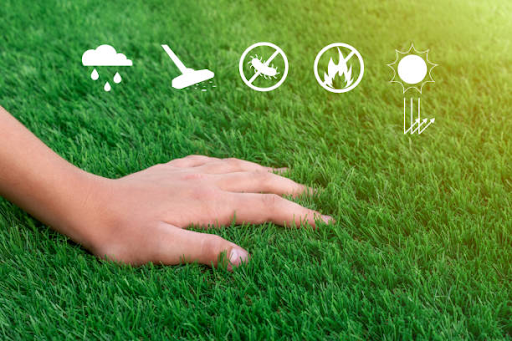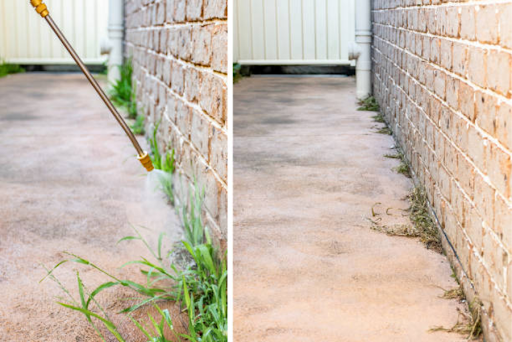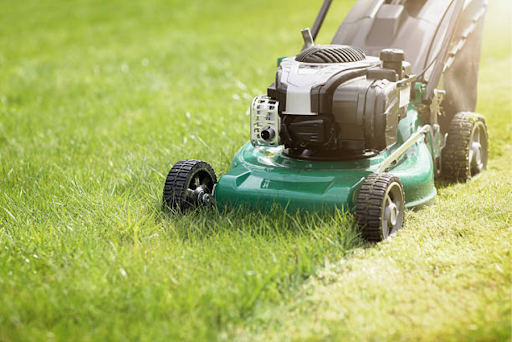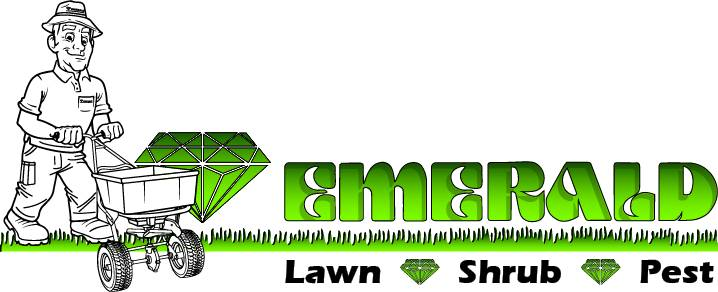Emerald Lawn-Scapes P.O. Box 174 Boonton, NJ 07005-1752
Essential Shrub Care for Your Garden in Morris County
Shrubs are essential elements in any New Jersey landscape. They frame gardens, add depth and color, offer privacy, and create that polished, inviting look many homeowners want year-round. But while shrubs may look low-maintenance, their health and appearance rely on strategic, seasonal care—especially in a four-season environment like Morris County.
From early spring pruning to preparing for winter winds, every season presents its own challenges and opportunities. At Emerald, we help homeowners across Morris County keep their shrubs healthy, vibrant, and beautifully maintained with care routines tailored to the regional climate.
Let’s walk through what your shrubs need across the seasons—and how to avoid common mistakes.
Why Consistent Shrub Care Is Critical
Healthy shrubs do more than look good. They protect your soil, support beneficial wildlife, and serve as a structural foundation for your landscape. When neglected, they can become unruly, disease-prone, or even die back altogether—especially during extreme weather cycles.
What many homeowners don’t realize is that issues often take root slowly. A shrub that seems fine in summer might be quietly struggling due to poor soil conditions, pests, or improper pruning. And once problems become visible, they’re usually harder and costlier to fix.
Investing in consistent care ensures your shrubs stay strong from the roots up. It’s about proactive health, not just reactionary trimming.
Spring: The Season of Renewal
Spring is when your shrubs "wake up" from winter dormancy. It’s also the most important time for structural shaping and damage control. If your shrubs were stressed by snow, salt, or wind, you’ll likely see broken branches, discolored leaves, or uneven growth.
This is when we recommend pruning evergreen shrubs, cleaning up storm damage, and removing any dead or diseased wood. For spring-flowering shrubs like azaleas or forsythia, wait until after blooming to prune so you don’t cut off flower buds. For non-blooming evergreens, light shaping early in the season promotes fuller growth.
Mulching is also essential this time of year. A fresh, breathable mulch layer helps retain soil moisture, suppress weeds, and buffer temperature swings—just be sure not to pile it against the shrub's trunk.
Proper spring care sets the tone for the rest of the year. It gives shrubs the foundation they need for lush summer growth, flower production, and root development.
Summer: Maintain Without Overworking
While summer is the season of growth and greenery, it’s also a time of stress for shrubs—especially those in full sun or newer plantings. Excessive heat, inconsistent watering, and pest pressure can all take a toll if not monitored closely.
This season, the goal is to maintain—not overwork—your shrubs. Lightly prune or deadhead any spent blooms on ornamental varieties, but avoid major shaping. Heavy pruning during high heat can shock plants and lead to weak regrowth or sun-scorched foliage.
Watering is crucial during dry spells, especially for shallow-rooted shrubs. Aim for deep, infrequent watering early in the day to prevent fungal issues and encourage root depth.
Also, be on the lookout for signs of pest activity. Insects like aphids, mites, and scale often thrive during the summer months, especially in tight plant clusters with poor air circulation. If you're seeing curled leaves, sticky residue, or speckled foliage, our landscaping team can help diagnose and treat the issue using safe, plant-friendly solutions.
Fall: Feed and Prepare
As temperatures cool, shrubs begin to slow down. But this doesn’t mean they’re inactive—below the soil, roots are still growing and storing energy for the next season. Fall is the best time to fertilize, especially with formulas that support root health over leaf growth.
Avoid fertilizers high in nitrogen during this season, as they can stimulate new shoots that won’t harden before frost. Instead, choose balanced or phosphorus-rich blends to help your shrubs develop stronger roots and better cold resistance.
Cleanup is just as important. Rake away any leaves, diseased twigs, or fallen debris from around shrub bases. This minimizes overwintering pests and fungal spores, giving your plants a cleaner start come spring. If needed, add mulch to insulate roots—but leave a buffer around stems to avoid rot.
This is also a good time to lightly prune or shape summer growth. Just avoid heavy cuts, which can invite frost damage during the first freeze.
Winter: Protection from Harsh Elements
New Jersey winters can be tough, and even mature shrubs need a bit of protection. Snow, wind, and salt spray can cause burn or desiccation, particularly on broadleaf evergreens or newly planted shrubs.
Anti-desiccant sprays are a popular solution to help shrubs retain moisture through the cold months. They form a waxy coating that slows water loss from leaves. For particularly vulnerable plants, wrapping them in breathable burlap or using wind barriers can help reduce damage.
If heavy snow accumulates on branches, gently brush it off with an upward motion using a broom. Avoid shaking frozen limbs—they’re brittle and prone to snapping. Check mulch levels periodically to make sure roots stay insulated without being suffocated.
Even though it may seem like “downtime,” winter protection pays dividends when spring rolls around and your shrubs emerge strong, green, and ready to grow.
Avoid These Common Shrub Care Mistakes
Even seasoned gardeners make missteps from time to time. But some habits can do more harm than good if they become routine.
- Improper pruning timing can ruin blooming cycles and expose shrubs to disease.
- Overwatering, especially in cooler months, can lead to root rot or fungal outbreaks.
- Neglecting pest control allows infestations to gain ground over winter and explode in spring.
If you're unsure whether you're helping or hurting your shrubs, consult professionals who know the local landscape. At Emerald, we help homeowners identify small issues before they become big problems—and develop custom plans that match your yard’s conditions and your lifestyle.
Why Choose Emerald?
As a local, family-run business serving Morris County for years, we know what works here—and what doesn’t. Our shrub care services are built around practical, proven techniques that promote long-term health rather than short-term fixes.
We don’t use cookie-cutter treatments. Every yard is different, and we approach each property with a careful evaluation of your shrubs, soil, exposure, and maintenance goals. Whether you’re maintaining existing ornamentals or building a new landscape from scratch, we’re here to support you every step of the way.
Ready for Shrubs That Thrive Year-Round?
Your shrubs are a big part of your home’s personality. With the right seasonal care and guidance, they can stay healthy, full, and beautiful through every frost and bloom.
Let our local experts help you do it right. Contact Emerald to schedule a shrub care evaluation and give your landscape the support it needs to thrive.
FAQs
When is the best time to prune shrubs in New Jersey?
Late winter or early spring is ideal for most shrubs, but wait until after flowering for spring-bloomers like azaleas or lilacs.
Can I fertilize my shrubs in the fall?
Yes, and you should. Fall fertilization helps support root growth and prepares your shrubs for winter.
What causes leaves to yellow or drop early?
Common causes include overwatering, poor drainage, pests, or a nutrient imbalance. A soil test often reveals the issue.
Are anti-desiccants safe for all shrubs?
They’re safe for most evergreens and broadleaf varieties but not recommended for plants that naturally drop leaves in winter.
Should I cut back all shrubs in winter?
Some shrubs should only be trimmed after flowering, and severe winter pruning can lead to dieback. Always identify your plants first.

